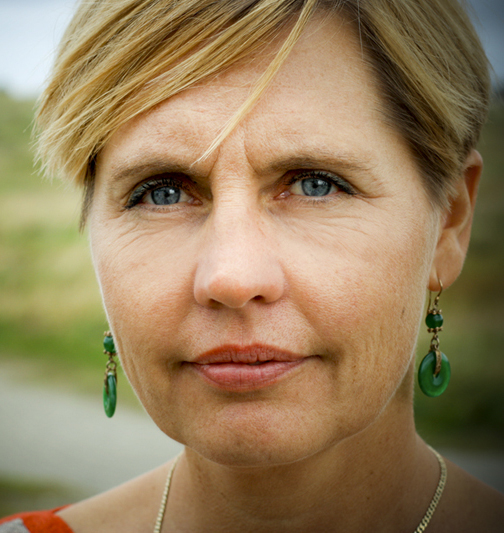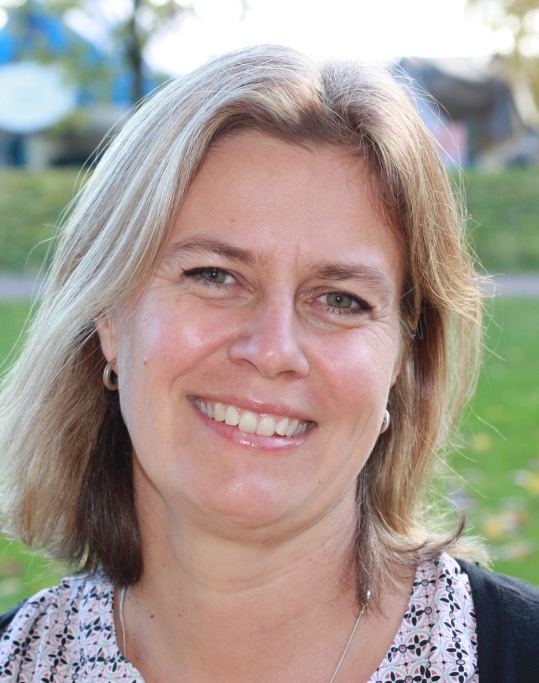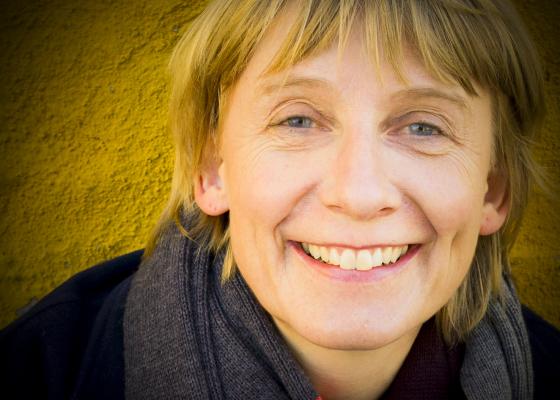Do female professors mean more gender perspectives in research?
Not necessarily, according to researchers. More women than men do research on gender, but all female researchers are not concerned with gender.
“When oil prices were high, Jens Stoltenberg (former Norwegian prime minister) said that gender equality is social innovation and just as valuable as our oil wealth. Now that oil prices are low, it’s definitely time to think about gender equality as a form of innovation,” says Dag Ellingsen, a researcher at the Work Research Institute (AFI).
But what are the connections between gender equality and gender balance, gender research, gender equality research and gender perspectives in research? Are gender balance and gender research tied together?
Ingeborg W. Owesen is the coordinator of the Research Council of Norway’s programme to improve the gender balance in senior-level positions and research management in academia. She uses herself as an example on how gender balance in research and gender research can be connected:
“I’ve worked as a gender researcher for many years, I’ve written a book on the history of gender equality in Norway, and now I work mostly with gender balance,” says Owesen.
“Which is it – am I building a bridge between gender balance and gender perspectives in research, or do I have one foot in each area?” she wonders.
In 2012, the Research Council decided to discontinue its gender research programme and focus instead on integrating gender perspectives in all research when relevant. In 2013, the Council introduced a new strategy in the field that runs up to 2017. This strategy encompasses both gender balance and gender perspectives in research.
Women’s entry into academia
Dag Ellingsen says he has no basis to claim that gender balance among researchers leads to more gender research.
“But I’m rather convinced that gender balance does lead to better research, and as a result, to more research with gender perspectives as well,” he says.
May-Linda Magnussen, a researcher at Agder Research, partly agrees with Ellingsen’s view:
“Yes, to a certain extent, better gender balance can lead to more gender perspectives in research. After all, it was women’s entry into academia that paved the way for such perspectives, and there is widespread consensus that underprivileged and marginalized groups are in a better position to spot the differential treatment and lack of attention they are subjected to.”
“When I look around me, however, it’s not the case that all female researchers are concerned with gender. Still, it’s a fact that most of those concerned with gender perspectives are women.”
Cautions against simple solutions
“But it’s far too easy to rely on better gender balance leading to more gender perspectives in research,” cautions Magnussen.

“While men used to almost completely dominate research and women’s absence from research was very obvious, today it can be difficult to identify the mechanisms underlying gender imbalance because they can be more complicated and subtle. As a result, women entering academia today may be less concerned with promoting gender perspectives in research than previously.”
Beret Bråten, a researcher at Fafo, believes that gender balance in research and academia is about two principles: one revolves around equal rights and opportunities and the other deals with democratic values and maintaining a diversity of perspectives in society.
“It may be that gender balance in academia and research institutions results in more gender research. But the alternative is more likely: that gender research is essential for creating gender balance,” says Bråten.
“Balance should be a goal in itself”
“We’re making it too easy for ourselves if we think that gender balance is simple, whereas gender perspectives are complicated. Both bump up against the same obstacles. It’s almost as difficult to increase the number of women in senior-level positions and among professors and project managers as it is to integrate gender perspectives in research,” says Mari Teigen, a gender equality researcher at the Norwegian Institute for Social Research.
“An explanation should be given when gender balance is not relevant, not when it is relevant!”
“In my view, gender balance should be a goal in itself because gender inequality indicates a narrow and exclusionary environment. It’s also a simple measure for reducing gender stereotypes.”
Teigen bases this on a well-documented scenario, namely that gender stereotypes and unconscious preferential treatment thrive in very gender imbalanced groups – and fade when gender inequalities are reduced.
“Gender balance is not the only goal, but an imbalance is especially problematic when it comes to political and economic power – and in research,” she says.
“But one thing the concept of gender balance has led to – which is not good – is that some view it as an instrumental job. ‘Now that we’ve achieved gender balance among the management, we’ve solved the problem and can move on.’ This won’t do. We need to work at a deeper level than that because a lack of gender balance is a symptom of a lack of equal opportunity, and this doesn’t necessarily disappear with a more balanced management group,” explains Bråten.
Greater acceptance for working with gender balance
Linda Marie Rustad, the director of Kilden kjonnsforskning.no, has gained experience in this area through her work with GENDER-NET, a collaboration between several European actors, including the Research Council of Norway. This project addresses both gender balance and gender perspectives, and Rustad points out four main challenges:
- There is a lack of understanding about what gender perspectives in research entails; it varies depending on the subject area.
- Gender balance and gender perspectives in research tend to be confused with each other.
- There seems to be greater acceptance for working with gender balance than gender perspectives, but we should not place these in opposition to each other.
- It is a goal to integrate gender perspectives into new subject areas. The idea is that researchers with limited knowledge about gender also need to work with gender perspectives. We see progress being made – from ignorance about the importance of the humanities and social sciences to a greater understanding of the need for knowledge from these disciplines.
“We should devote more time and resources to gender perspectives – not at the expense of gender balance, but in addition to it,” says Rustad.
Challenging mandate expansion for the KIF Committee
Heidi Holt Zachariassen, who works in the secretariat for the Committee for Gender Balance and Diversity in Research (the KIF Committee), tells about practical challenges following the expansion of the committee’s mandate. The committee is supposed to work not only with gender balance, but also with gender perspectives – in addition to diversity and diversity perspectives.

“Two areas are especially challenging for us. One is the work method and the other is the question of which actors we work with. Now that we work with gender perspectives in research, we have to also look at research content. In this case, it’s important to use insights from gender research, and base our work on scientific literature.”
As a consequence, in order to work with gender equality research and gender perspectives in research, the KIF Committee now has to become familiar with individual subject areas.
“When we give a presentation at the police academy, it’s not enough to have knowledge about the gender balance issue. We also need to be familiar with police science research as an academic field to show how a gender perspective is relevant,” explains Zachariassen.
“While we used to work for researchers, but with gender equality advisers, now we also work with the researchers themselves,” she says.
No tools, no action
The Research Council of Norway had a separate gender research programme up to 2012. In 2013, the Council introduced a new strategy in the field that runs up to 2017. The new strategy encompasses both gender balance and gender perspectives in research.
“The Research Council has perhaps had a skewed focus on gender balance versus gender research in that they have been most concerned with gender balance,” says Beret Bråten.
“But what gender research and research with gender perspectives can learn from the work to improve gender balance is that nothing happens without tools for implementation. Rules, money, expertise and large-scale initiatives are needed. We must use structural instruments; this is absolutely essential,” she says.
Dag Ellingsen emphasizes that gender research would also benefit from gender balance – that is, more men. He believes that better gender balance will result in multiple perspectives, and Norwegian research in general would benefit from more perspectives.
To achieve this, you need commitment from the top-level management:
“It’s crucial that the management is on board, both with regard to research management and management at the Research Council,” states Ellingsen.
Translated by Connie Stultz.
The Research Council and gender
In 2012, the Research Council decided to discontinue its gender research programme and focus instead on integrating gender perspectives in all research when relevant.
The Research Council strategy for gender, entitled Gender balance and gender perspectives in research and innovation, is valid for the period from 2013 to 2017. The strategy addresses both gender balance, in the form of a more even distribution of men and women in research and academia, and the integration of gender perspectives in research.
The Research Council’s Programme on Gender Balance in Senior Positions and Research Management (BALANSE) was established in 2013. The primary objective is to improve the gender balance at senior level in Norwegian research through new knowledge, learning and innovative measures. The BALANSE programme runs until 2022.
The KIF Committee
In 2014, diversity was incorporated into the new mandate, and the name of the fourth committee was changed to the Committee for Gender Balance and Diversity in Research (KIF). The committee’s most important task is to work with gender and ethnicity issues, which encompasses diversity perspectives in research. Gender perspectives are included in this.

